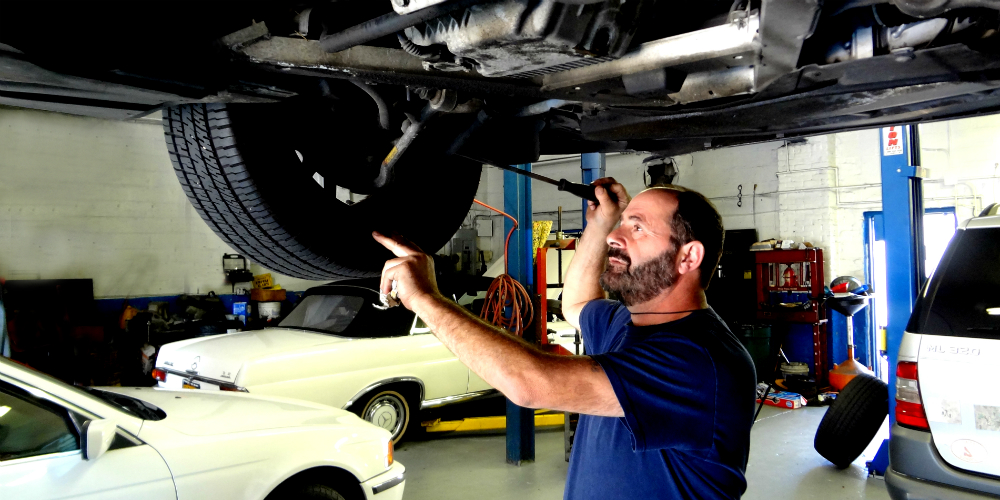All Categories
Featured

Keeping your car's tires is crucial to guarantee a smooth, safe, and efficient driving experience. Two essential services that are usually neglected but have a considerable influence on tire durability and efficiency are tire rotation and alignment. These services aid keep your car running effectively and protect against unequal tire wear that can impact both security and gas economic climate. Let's dive into what tire rotation and positioning are and why they are necessary for your car.
What Is Tire Rotation? Tire turning is the procedure of moving your tires from one placement to another to ensure they wear evenly. Because your cars and truck's tires function at different prices depending upon their position (front tires versus back tires), revolving them regularly aids to disperse the wear uniformly, leading to a much longer life expectancy for your tires.
Tires on the front axle have a tendency to use quicker than those on the back axle, specifically in front-wheel-drive automobiles, where the front tires take care of both guiding and power. On the other hand, rear tires could put on erratically depending on the lorry's weight distribution and driving problems. By rotating your tires every 6,000 to 8,000 miles (or as advised by the supplier), you'll ensure a much more well balanced wear pattern.
What Is Tire Alignment? Tire positioning, also understood as wheel placement, refers to readjusting the angles of your automobile's wheels to the producer's specifications. Proper positioning makes sure that your tires are aiming in the right instructions, and it helps optimize tire life and enhance car handling. There are three main elements of placement: camber, wheel, and toe.
Camber refers to the tilt of the tires from the front of the car. If your tires are slanted excessive internal or outside, it can trigger uneven wear. Caster describes the angle of the guiding axis when seen from the side of the automobile. This influences the security of the steering, especially when driving directly. Toe refers to the angle at which the tires direct inward or exterior when watched from above. This influences just how your vehicle tracks when traveling. A proper positioning guarantees that all 4 tires are directing directly ahead and are angled correctly. Imbalance can result from striking gaps, aesthetics, or simply from the wear of suspension elements gradually.
Why Tire Rotation and Positioning Matter. Extended Tire Life. Both tire turning and alignment assistance protect against irregular tire wear. When your tires wear uniformly, they last longer, which can conserve you money over time by reducing the demand for early substitutes.
Improved Safety And Security. Appropriate tire turning and alignment boost automobile stability and handling. Misaligned tires or unevenly worn tires can adversely influence your ability to guide and stop your car, especially in emergency scenarios. Normal upkeep ensures your tires do optimally, offering a much safer driving experience.
Better Fuel Performance. If your tires are not aligned properly, they may drag against the roadway surface area, creating resistance. This extra friction can minimize gas effectiveness, causing your vehicle to consume even more gas. Routine tire positioning makes sure that your vehicle moves efficiently, boosting gas mileage.
Improved Comfort. Imbalance or unevenly used tires can result in a rougher adventure, as your auto may draw to one side or trigger resonances. By maintaining your tires turned and straightened, you'll enjoy a smoother and extra comfy driving experience.
Indicators That Your Tires Need Rotation or Placement. It's important to remain sharp for any indicators that your tires require turning or alignment. Look out for these usual indications:
Uneven Tire Wear: If you see that a person tire is dramatically much more worn than the others, it might be time for a turning or positioning. Steering Pull: If your car draws to one side while driving straight, this can show misalignment. Vibrations: If you feel resonances in the steering wheel or the auto itself, it can be an indicator of imbalance or irregular tire wear. Screeching Tires: Unusual tire sound can likewise suggest inappropriate alignment or the demand for a tire turning. How Usually Should You Turn and Align Your Tires? Tire rotation must usually be done every 6,000 to 8,000 miles or as defined in your vehicle's proprietor's guidebook. It's a good concept to rotate your tires throughout every oil change, as this will certainly assist you remain on top of normal maintenance.
As for alignment, it does not require as constant solution. Usually, placement must be inspected at the very least once a year or whenever you see concerns like pulling away or resonance. You may additionally need placement if you've struck a large pocket or visual, which can throw your wheels out of placement.
Conclusion: Maintain Your Tires in Top Forming. Tire turning and placement are essential solutions that maintain your lorry running efficiently, securely, and successfully. By putting in the time to have your tires turned and lined up on a regular basis, you're buying your auto's efficiency and durability, while also improving your safety on the roadway. Remain aggressive with tire upkeep, and your car will thank you with better gas economy, boosted handling, and prolonged tire life.
Latest Posts
Reasons Consistent Vehicle Maintenance at Montclare Auto Repair Reduces Costs
Secure Your Financial Investment with Expert Rain Gutter Installation
Discover Cut Costs on Car Maintenance with Montclare Auto Repair’s Special Deals
More
Latest Posts
Reasons Consistent Vehicle Maintenance at Montclare Auto Repair Reduces Costs
Secure Your Financial Investment with Expert Rain Gutter Installation
Discover Cut Costs on Car Maintenance with Montclare Auto Repair’s Special Deals